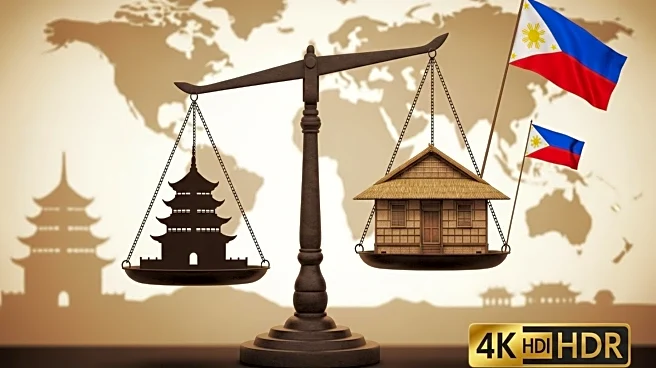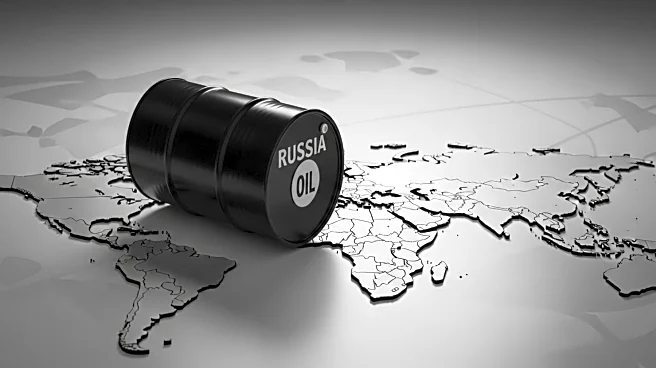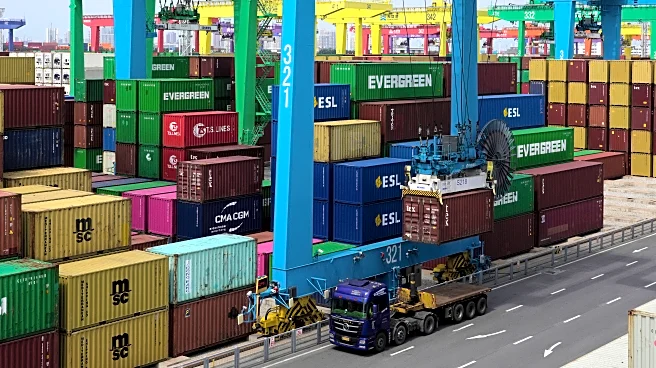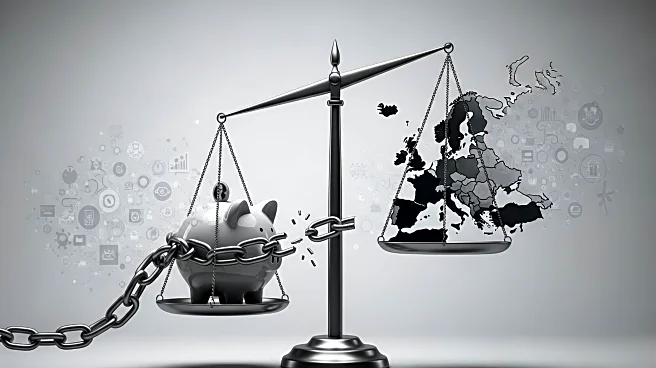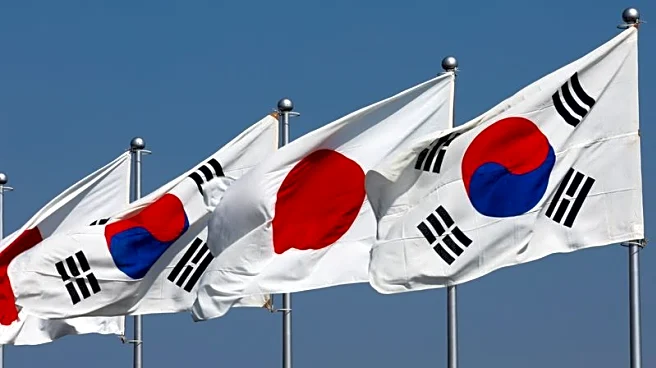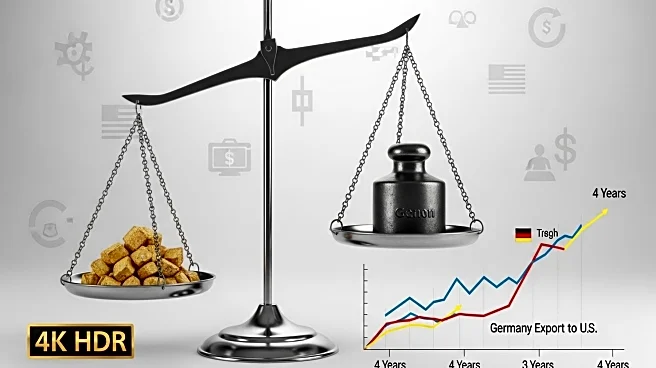What is the story about?
What's Happening?
China's trade deficit with the Philippines has reached $2.6 billion as of July 2025, accounting for 63% of the $4.0 billion balance of trade deficit for the same period. Imports from China have increased by 17.6% year-on-year, totaling $21.9 billion in the first seven months of 2025. This surge in imports includes consumer goods such as passenger cars and motorcycles, which grew by 23.2% year-on-year to $4.0 billion, and other non-durable consumer goods, which increased by 14.4% year-on-year to $3.6 billion. The increase in imports is partly attributed to the effects of tariff hikes imposed by the US, which have led global manufacturing industries to shift focus to other markets.
Why It's Important?
The growing trade deficit and increased imports from China reflect broader global economic dynamics, including the impact of US tariff policies and China's economic strategies. For the Philippines, this situation presents both challenges and opportunities. On one hand, the influx of Chinese goods could pose competitive pressures on local industries. On the other hand, consumers may benefit from lower prices due to deflationary pressures from excess manufacturing capacity in China. The situation underscores the complexities of globalization, where countries must balance protectionist policies with the benefits of open markets.
What's Next?
The Philippines may need to reassess its trade policies and strategies to manage the effects of increased imports from China. This could involve strengthening local industries to compete effectively or negotiating trade agreements that mitigate adverse impacts. Additionally, the US may need to consider the long-term implications of its tariff policies on global trade dynamics and its influence in the Asia-Pacific region.
Beyond the Headlines
The situation highlights the importance of strategic management in globalization, where countries must navigate both the positive and negative aspects of global economic powers like the US and China. It also reflects historical shifts in regional power dynamics, such as the Philippines' past decisions regarding US military presence and current efforts to strengthen alliances with Western nations.
AI Generated Content
Do you find this article useful?
